got a tasty batch of Japanese curry powder that you’d love to use for something different than Japanese curry? consider making these super flavorful curry seasoned konnyaku blocks and you may never see konnyaku the same again!

Japanese curry powder
as you may know japanese curry has a different flavor than indian and thai curries.
it’s not as spicy and tends to be rich and robust in flavor and full of umami.
there’s a lot of ways you can enjoy japanese curry flavors, for example in korrokke, kare-pan (friend and stuffed curry bread), fried rice, yakisoba and other japanese dishes.
and if you love the flavor of japanese curry or curry in general you’re gonna love these little japanese curry seasoned konnyaku blocks.
if you dont have japanese curry powder, this is the key ingredient you’ll need to make this dish. surprise?
the s&b brand is likely one of the most popular and easily found either at your local japanese market or online.
and don’t worry, japanese curry powder can be used to make all kinds of foods where you’d want a curry flavor.
so if you know you’ll use it, consider getting a larger can (if available.)
Konnyaku facts
konnyaku has zero sugar
konnyaku has zero fat
konnyaku has zero protein
konnyaku has zero carbohydrates
konnyaku has zero calories
so then…. what does konnyaku ACTUALLY have ??
DIETARY FIBER!
Almost all of the konnyaku block is water, and the fiber it contains is glucomannan, a soluble fiber.
In fact you can buy it in it’s pure form though it might be hard to find ways to use it. if you have used it, i’d be curious how ?
share your experiences with konyakku powder in a comment below! 😛
Cooking with konnyaku
Konnyaku naturally consists of mostly water and when you cook it in oil, it’s going to splatter. To minimize the mess it’s gonna make – consider using a deeper frying pan or a dutch oven to catch the oil splattering everywhere.
Make sure to thoroughly brown your konnyaku blocks because it will help to improve the texture and flavor. Yes, konnyaku does form a nice skin if you allow it to cook long enough without moving it. Make sure you have added enough oil to your pan if you’re using a sticky skillet. Using white blocks will help to see how well it has browned, but if you’re using brown konnyaku, you can pick up a piece and see if you notice any small bubbles that have formed under the skins.
Another important technique is the scoring of the surface, the scoring helps to not only improve the texture by allowing liquid from the surface to cook off, but also allow more surface area for the seasonings to stick to.
you’re going to want to make the konnyaku enjoy an honorable death by 1000 cuts!
this is best enjoyed hot so make sure to serve right away or keep warm until ready to eat.
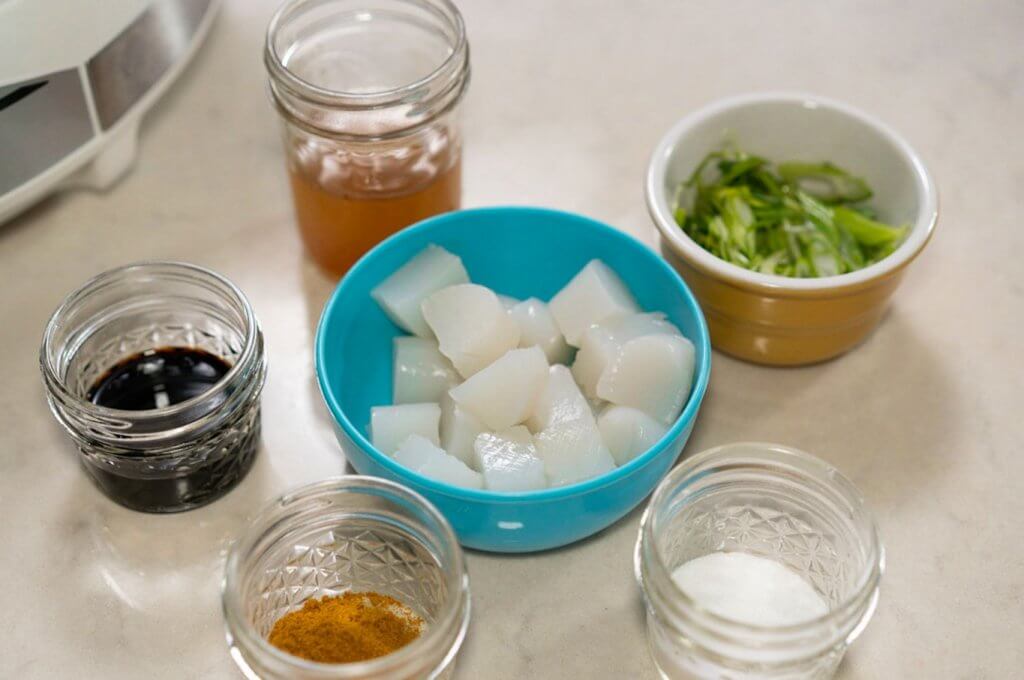
Tips for Preparing and seasoning konnyaku
as you watch through the end of the video you might learn a few tips like parboiling the konnyaku (as you would shirataki noodles) to remove excess water, and help it to absorb the flavor/seasonings better. in addition, the way you cut the konnyaku such as using a spoon to give it an irregular surface (plus more surface area) is another technique you can employ. as well as the way you cut and score the konnyaku – all of these techniques can make a significant difference in the flavor you get in each bite.
and since konnyaku doesnt have much flavor on it’s own, it can be used in a variety of different ways! especially in japanese dishes – both main dishes like nabemono (japanese hot pot), oden (simmered foods in dashi), nimono (simmered japanese foods) and side dishes (okazu) which is what we’re making today!
plus konnyaku is plant based being made from the konjac plant just like the miracle noodle version also known as shirataki noodles.
and just like the shirataki noodles it comes in different shapes and colors, but the flavor is pretty much the same, so use the konnyaku you can get. konnyaku might just be the jiggliest vehicle for japanese flavors you’ve ever known

How To Cook Konnyaku | 3 INSANELY EASY Japanese konnyaku recipes to enjoy video
PrintKonnyaku with Japanese curry powder (simple and delicious!)
Ingredients
- 1 block white konnyaku, cubed, parboiled, and scored lightly with a sharp knife
- 2 Tbsp soy sauce
- 1 Tbsp sugar
- 2 tsp japanese curry powder
- ½ cup dashi or vegetable stock
- 1 Tbsp olive oil
- to garnish – chopped green onions
Instructions
- Cut the konnyaku into small bite size blocks and boil in water for about 5 minutes and drain.
- Use a sharp knife and score all sides of the blocks. You want to create a criss-cross pattern with as many small cuts as possible, about 1/8 to 1/16th of an inch deep. Once scored, set aside.
- Using a large sauté pan, heat olive oil and lightly brown the konnyaku on all sides, 7-10 minutes.
- While browning combine the seasonings into one jar so you can dissolve the sugar and easily pour into the pan to reduce.
- Once the konnyaku blocks have browned, add the sauce and cook for a 2-3 minutes until liquid is reduced.
- As the liquid cooks down, about half way ad in the curry powder and mix into the sauce ensuring all of it has been incorporated.
- At this point you can serve for a saucier dish or cook down for a more concentrated and bolder flavor.
- Serve with the green onions on top.
Notes
- Consider using a deeper frying pan or a dutch oven to minimiuze the oil splattering everywhere.
- Make sure to thoroughly brown your konnyaku blocks because it will help to improve the texture and flavor.
- Another important technique is the scoring of the surface, the scoring helps to not only improve the texture by allowing liquid from the surface to cook off, but also allow more surface area for the seasonings to stick to.
- Using white blocks will help to see how well it has browned, but if you’re using brown konnyaku, you can pick up a piece and see if you notice any small bubbles that have formed under the skins.
want to cook konnyaku so it’s unforgettably delicious?
ever wondered how you could get the mysterious and seemingly bland, boring konnyaku block to taste good?
it’s all about the seasoning and a few key methods of preparation.
if you haven’t yet tried any konnyaku recipes with japanese flavors, let this be your first so we can set the bar nice and high in terms of flavor and deliciousness!
now you have one tasty japanese konnyaku recipe and we’ve got a couple more coming soon
have you tried japanese curry powder yet? what about konnyaku? what did you make ? lmk in the comments!
PS if you havent yet maybe subscribe so you dont miss any of my new japanese cooking videos



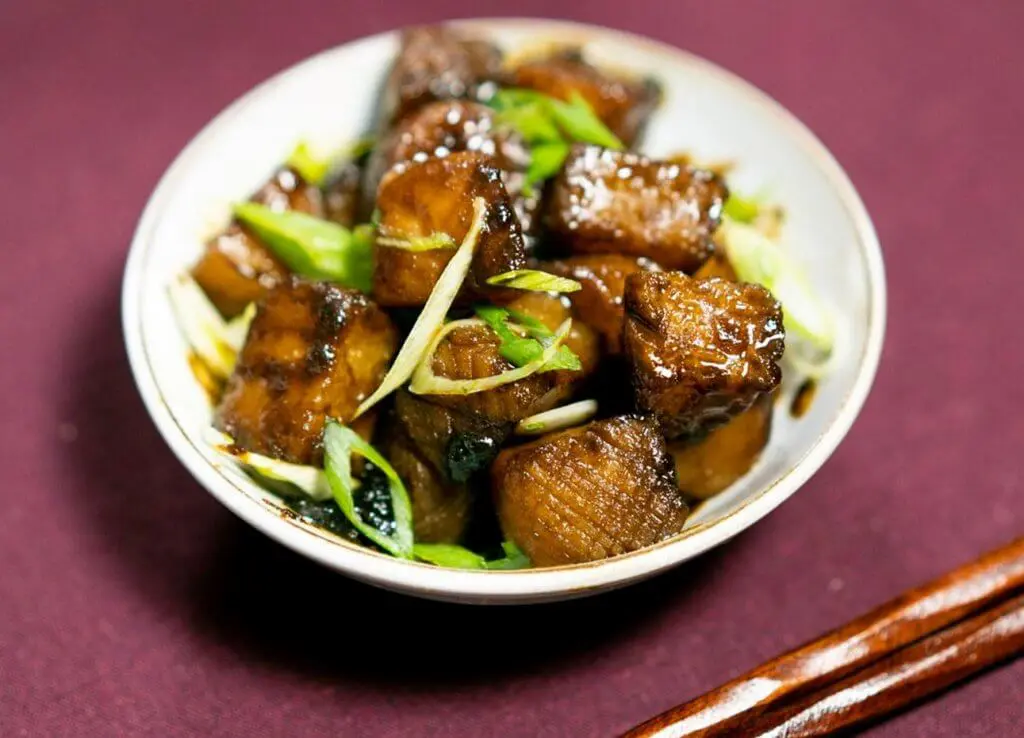

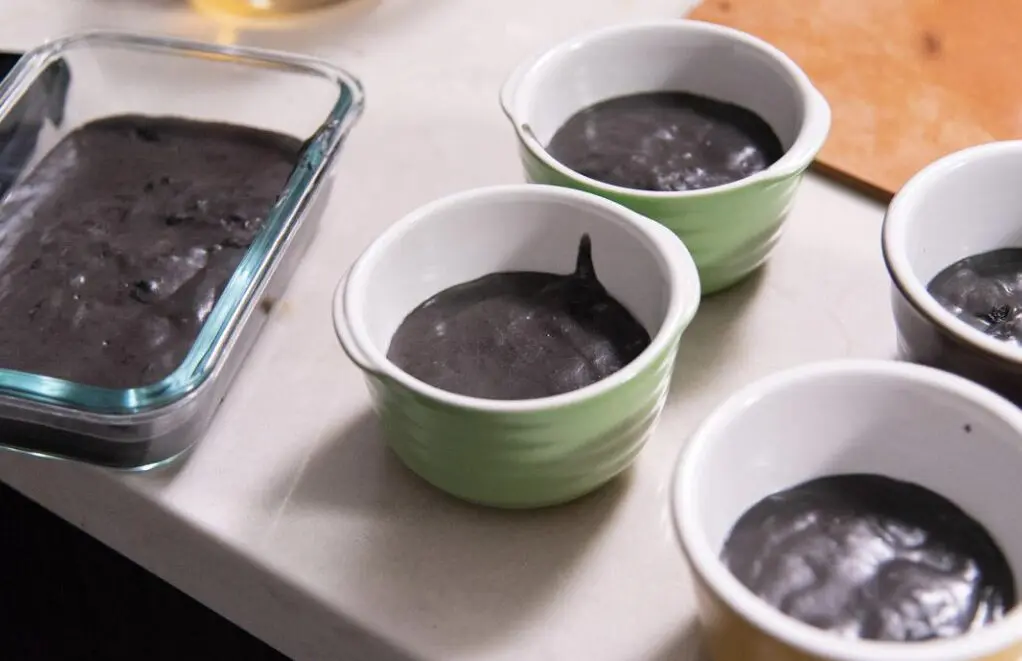
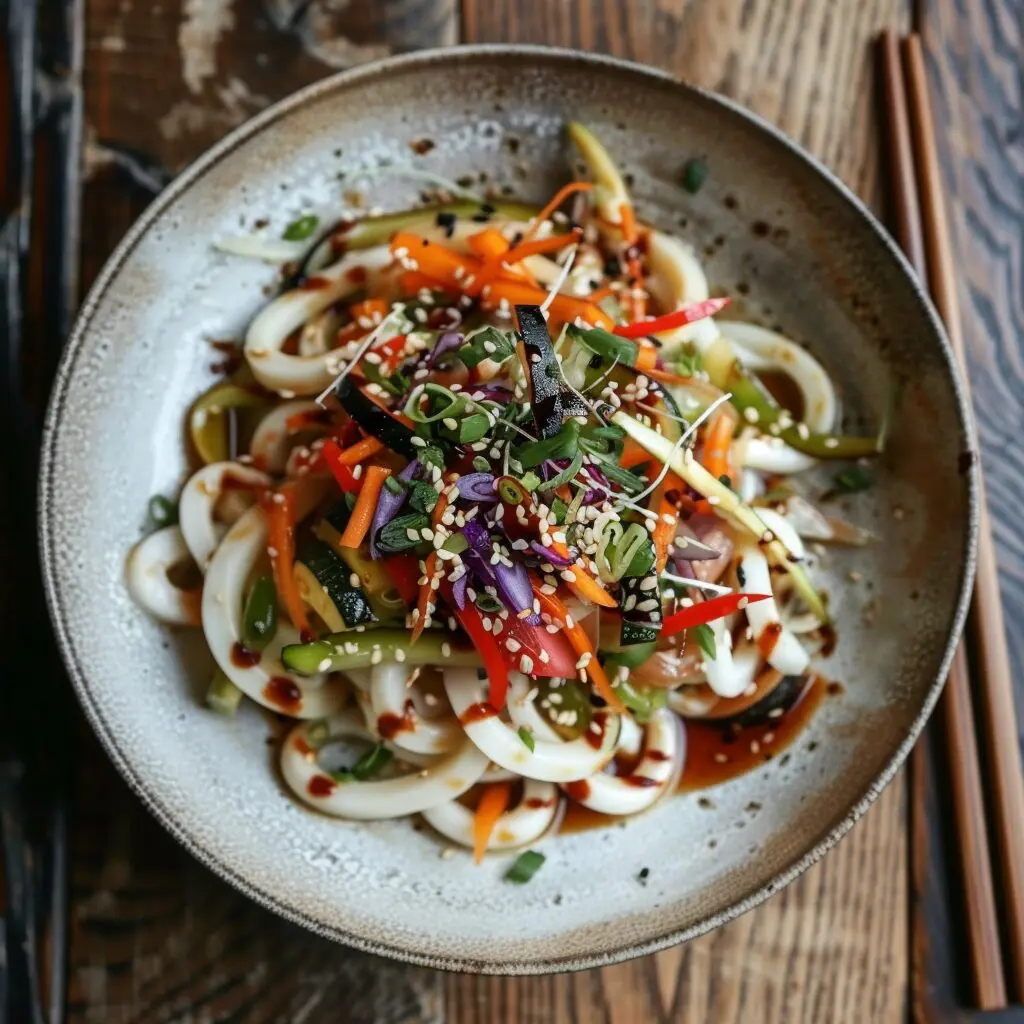
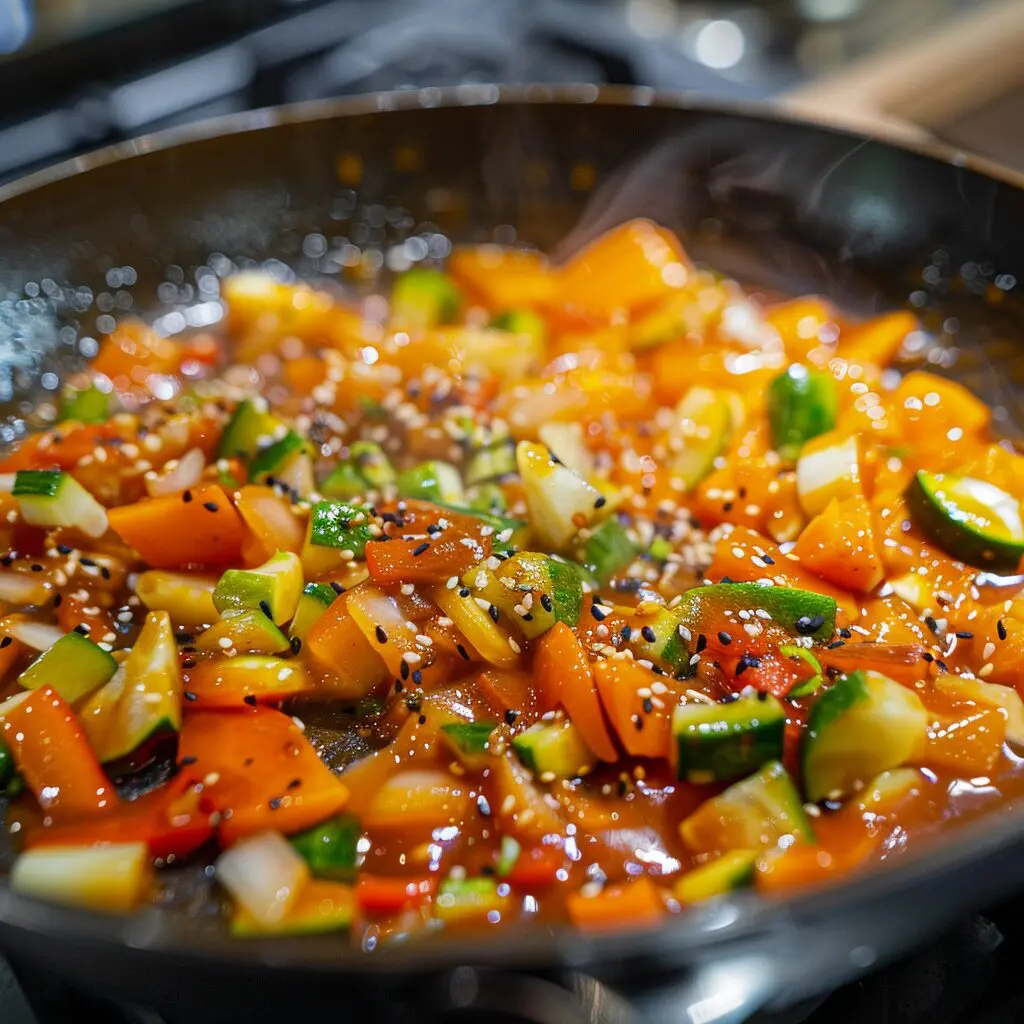
Konnichiwa! (Hello!) I'm Pat Tokuyama, a Japanese tofu cookbook author, who travels for music, food, and adventure. If you like Japanese tea, checkout some of the newestorganic japanese tea, matcha bowls and noren and more!
** Curious about the Plant Based Japanese Cooking Club? ** Learn more here!